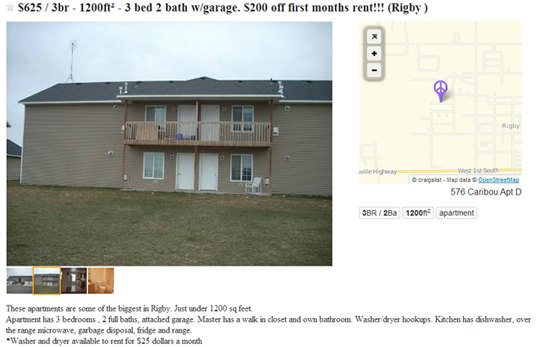Whether you’re a new landlord, or professional property manager, knowing and understanding Federal, State and local Fair Housing laws is critical. A small violation of one of these laws could wind you up in court, or even worse, ruin your business. So, we’ve put together a list of common areas where landlords and property managers find themselves violating fair housing laws.
Fair Housing Laws
Fair Housing Laws originated from the Civil Rights Act. These Federal laws make it illegal for property owners/ managers to discriminate on the basis of race, color, religion, national origin, sex, disability or familial status. In addition to Federal fair housing laws, landlords need to be aware of state and local fair housing requirements, which prohibit discrimination based on factors such as source of income and sexual orientation.
Common Violations
1. Tenant Screening
This is one of the most common areas in which fair housing claims arise. Landlords need to ensure that they have a written policy in place for screening and approving prospective tenant applications. Landlords need to outline set guidelines relating to occupancy, availability,screening criteria (credit standards, employment history, past landlord referrals, background check etc). Questions on the application should not ask about physical or mental disabilities, religious background, race or familial status. On the other hand, landlords are allowed to ask questions relating to prior tenant record, evictions, and bankruptcy. The guidelines should always be approved by a lawyer, and strictly adhered to in all situations.
2. Reasonable Accommodation
It is a violation of Fair Housing laws to refuse to make a reasonable accommodation in rules, policies, practices or services when such an accommodation may be necessary to afford a handicapped individual equal opportunity to inhabit a dwelling. The reasonable accommodation must come at the request of the applicant. A landlord must make exceptions to their rules/standards in order to accommodate a resident’s disability. These accommodations should not cause “undue” burden on the landlord. If it does cause an undue burden the landlord may deny the tenant’s application. In the case a reasonable accommodation is deemed to cause an undue burden, the landlord should send an explicit written notification to the resident explaining why. Landlords should always wait for a request of reasonable accommodation. Offering it beforehand could be considered discrimination and grounds for a fair housing claim.
3. Occupancy
Occupancy limits are written different in every city. For example, in Boise Idaho, a maximum of 5 unrelated adults are permitted to share a unit. However, Bend Oregon has no limit. Further, landlords need to be mindful about how they market rental occupancy limits. For example, if a landlord states that they can only rent to a family of four because it is only a 2 bedroom dwelling, they could be discriminating based on familial status. As a result, landlords need to check their local occupancy laws. There are different occupancy limits based on whether or not individuals are related or unrelated, and some cities remove all occupancy restrictions on families. This is an area where due diligence is very important.
4. Source Income
Landlords need to be mindful that some states have additional state and local fair housing requirements that must be adhered to in addition to federal laws. Currently, in 12 states it is illegal for residential landlords to discriminate against applicants based on source of income. For example, a landlord may not refuse to rent to an individual who’s source of income is unemployment benefits. This is not to be confused with income amount. Landlords are still allowed to deny tenants that don’t make enough money to pay for rent. Typically, a landlord will require applicants to show proof that their income is triple the amount of rent. Make sure to check with an attorney regarding your state’s laws regarding source of income.
5. Marketing Practices
Landlord marketing practices are crucial for finding tenants and filling rental properties. However, landlords need to be mindful that marketing materials should only be used to showcase “property features” and amenities, and not contain content outlining screening requirements. For example, landlords should never post things such as “great for elderly couples” as this could be deemed discriminatory against young single people. Do not make reference to nearby landmarks that may be racial, ethnic or religious in nature, and don’t use location references such as “Hispanic neighborhood”. It is also a good practice to include copy at the end of all marketing materials that indicate compliance with fair housing laws.
6.Eviction
Landlords can evict tenants for legitimate reasons such as non-payment of rent or property damage. However, it could be illegal to evict a tenant that has not violated the lease agreement, or it is an unprecedented event. Ask yourself, have you evicted tenants for the same behavior before in the past. Landlords need to make sure that they are applying the same written policies to all residents. Any apparent favor could be construed as discrimination in the courts.
Final Note
Every landlord should be mindful of fair housing laws in every practice they encounter on a day to day basis. Whether that is marketing rental properties, screening applicants, providing accommodations for handicapped individuals or evicting troublesome tenants. Landlords should also develop strict written policies for all operational tasks and apply them equally and consistently to all residents and applicants. Finally, if you’re a landlord, have a lawyer review all your documentation and policies.
via:http://jacobgrant.com/2013/11/6-common-landlord-fair-housing-violations/











